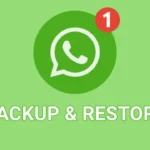If you’re facing connectivity issues, security concerns, or simply want to regain direct access to the internet, you might wonder how to remove a proxy server from your device. In this guide, we’ll walk you through the process of identifying and removing a proxy server from different operating systems and devices. We’ll also explore alternative solutions, such as using a VPN or purchasing reliable proxies like Proxy BR. Let’s get started!
What Is a Proxy Server?
A proxy server acts as a middleman between your device and the internet. When you connect to a proxy server, your internet requests are routed through the proxy, which communicates with the web server on your behalf. This can help in hiding your IP address, accessing geo-restricted content, and bypassing certain filters or firewalls.
Different Types of Proxy Servers
Not all proxy servers are the same. There are several types of proxies, each serving different purposes:
- HTTP Proxies: These are used for browsing the web. They only route web traffic (HTTP and HTTPS).
- SOCKS Proxies: A more flexible proxy that can handle a variety of traffic, such as email, FTP, and video.
- Transparent Proxies: These don’t hide your IP address and are often used in schools or workplaces for monitoring.
Proxy servers are incredibly useful for certain tasks but can also cause problems.
Benefits and Risks of Using Proxy Servers
While proxy servers offer benefits like anonymity and access to geo-restricted content, they come with risks. Some proxies may log your data, which can compromise your privacy. Others can slow down your connection, and free proxy servers are notorious for having security vulnerabilities.
Why Would You Want to Remove a Proxy Server?
Though proxies can be useful, there are reasons why you might want to remove them:
Common Issues Caused by Proxy Servers
Proxy servers, especially free or misconfigured ones, can cause:
- Slower internet speeds: Proxies add an extra layer of traffic routing, which can decrease speed.
- Connectivity issues: Misconfigured proxies can prevent you from connecting to certain websites or services.
- Blocked services: Some websites block proxy traffic, restricting access when you’re using one.
Security Concerns and Privacy Issues
Some proxies log your data or leave you vulnerable to hackers. If you’re concerned about privacy or security, it might be best to remove the proxy and opt for more secure alternatives like a VPN.
How to Identify If You’re Using a Proxy Server
Before removing a proxy server, it’s essential to identify whether one is in use. Here’s how to check on various platforms:
Checking Your Proxy Settings on Windows
- Open the Settings menu.
- Click on Network & Internet.
- Select Proxy from the left-hand sidebar.
- If any settings are enabled, you’re using a proxy.
Checking Your Proxy Settings on macOS
- Go to System Preferences.
- Click on Network.
- Choose your active network connection and click Advanced.
- Navigate to the Proxies tab. Any checked boxes indicate a proxy is in use.
Checking Proxy Settings in Web Browsers
Web browsers like Chrome, Firefox, and Edge have their own proxy settings, which can differ from system-wide settings. To check, head to your browser’s settings and look for the Network or Connection options.
How to Remove a Proxy Server from Different Devices
Now that you’ve identified whether you’re using a proxy, here’s how to remove it from different operating systems:
Removing a Proxy Server on Windows
- Open Settings.
- Go to Network & Internet, then select Proxy.
- Disable the option to use a proxy server, and ensure Automatically detect settings is enabled.
Removing a Proxy Server on macOS
- Go to System Preferences and click on Network.
- Click on Advanced and go to the Proxies tab.
- Uncheck any boxes next to the proxy options and hit OK.
Removing a Proxy Server on Android and iOS
- Android: Open Settings, go to Wi-Fi, select your network, and scroll down to find the proxy settings. Set it to None.
- iOS: Open Settings, tap Wi-Fi, select your network, scroll down, and set the HTTP Proxy to Off.
Alternative Solutions to Proxy Servers
Instead of completely removing proxies, you can consider better alternatives like VPNs. A VPN offers a higher level of encryption and privacy than most proxy servers.
Using a VPN Instead of a Proxy
A Virtual Private Network (VPN) encrypts your traffic and routes it through a secure server, offering better privacy and security than a proxy server. VPNs are ideal for protecting sensitive information and bypassing geo-restrictions more reliably.
Buying Reliable Proxies Like Proxy BR
If you still need a proxy for specific tasks, it’s best to invest in reliable proxies. One great option is Proxy BR, which provides fast, secure, and trustworthy proxies, especially useful for accessing Brazilian content and services.
Conclusion
Proxy servers can be helpful but may also cause issues that make your browsing experience frustrating. By following the steps outlined in this guide, you can easily remove a proxy server from your device and improve your internet experience. Remember, if privacy and security are a concern, switching to a VPN or purchasing trusted proxies like Proxy BR can offer better solutions.
FAQs
- What happens if I remove a proxy server?
Removing a proxy server means your device will connect directly to the internet without any intermediary. This can improve speed but might limit access to certain restricted content. - Can removing a proxy server improve my internet speed?
Yes, removing a proxy server can enhance your internet speed, especially if the proxy is slow or overloaded. - How do I know if I am using a proxy server on my smartphone?
You can check your phone’s Wi-Fi settings and see if any proxy is enabled for your current connection. - Are VPNs safer than proxy servers?
VPNs are generally safer as they encrypt your entire internet connection, while proxies typically don’t offer the same level of security.
What is the difference between proxy servers and VPNs?
A proxy server only routes specific types of traffic (like web browsing), while a VPN encrypts and routes all of your internet traffic, making it a more comprehensive privacy tool.






